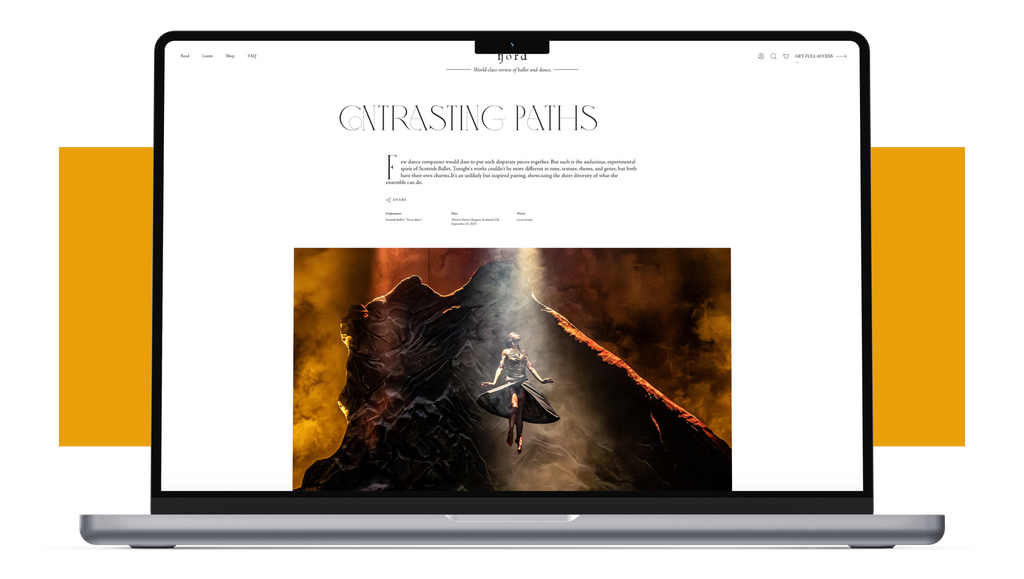As for Jimison’s Odette/Odile on opening night, she stepped into a high-pressure moment heroically, and her interpretation has the potential to develop into something special. In her arabesque she almost has Fonteyn-like qualities of tranquility and softness, so harmonized are her long arms, elegant fingers, and regretful downcast gaze. But her arms in motion need to develop their own style for her Odette to be singular, and the emotional valence needs to vary beyond pained suffering. In other words, her first lakeside scene could develop more emotional contrast.
As the Act Three Black Swan, although her deviousness simmered at a minimum boil, she held an exciting balance and got through the fouettés passably, quickly nixing the doubles after the first round made her travel a disconcerting distance. It was at this point that I thought to myself, “She has good chemistry with Isaac Hernandez,” her Siegfried. He was having a strong show, his acting very natural and free, and his connection to her was palpable—but it was the connection of a dancer pulling for his peer’s success, rather than a connection between them as immersed in their characters. Still, an exciting kind of chemistry in its own right.
An additional seven performances of “Swan Lake” to cap a season offers opportunities for corps dancers to bust out, of course, and my favorite in this category was Angela Watson. She was something special in the Act One pas de trois, with arms that are delicate and conversationally alive, and an energy that is both sharp and calm. On the other end of the casting spectrum, everyone was talking about Angelo Greco, an audience favorite principal since 2017, who is leaving for Houston Ballet with only the rather oblique explanation that he’s craving new experiences.
Greco was given the final performance of the run, alongside Misa Kuranaga, with whom he’s developed a close and touching partnership. On the one hand, how fitting that Greco had the final show; on the other, why not honor our departing dancers as Peter Boal does at Pacific Northwest Ballet, with a season-capping encore dedicated to the company’s own members? Guest stars, by all means—bring Camargo back! But Tomasson’s more low-key way of handling casting had its merits. There will always be chatter around perceived favoritism and snubs, “guest star” encores or no, true. Nevertheless, I’d be happy to keep more of the drama on the stage. The world has bigger problems than these casting soap operas, and a ballet like “Swan Lake” should be our respite and rejuvenation, the better to hold life’s real conflicts.












Brava, Rachel for your fine review, written as beautifully as the
Swan Lake ballet itself.